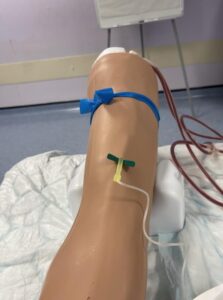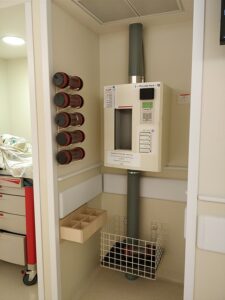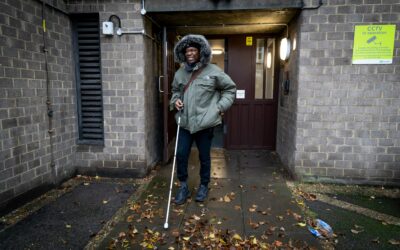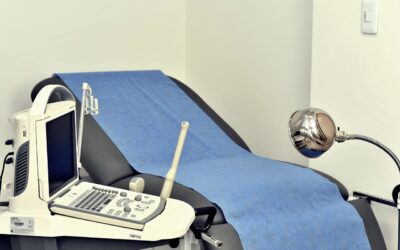My first time taking blood from a patient
By Ivy
Hi, everyone! My name is Ivy, a third-year medical student who recently started my first-ever hospital placement this academic year. As you might already know or not know, third year is when you start going onto hospital placements and meet real patients. This is the year when you feel much closer to becoming a real doctor.

Venepuncture practise arm
As medical students, there is a set list of skills that we are expected to practise and master on placements to become competent junior doctors, one of which is venepuncture (otherwise known as taking blood). You will also have to get signoffs from healthcare professionals on a logbook as evidence that you have practised these skills. Before going onto placements, we were taught these skills and given the opportunity to practise them on mannequins during clinical skills sessions in the skills centre. However, even though I had already practised a good number of times on mannequin arms (which you can see in the picture above), doing it on a real patient just didn’t feel the same. Veins in real patients especially elderly patients are frequently challenging to find, unlike the obvious and easily identifiable veins in mannequin arms. There is also the added pressure of patients observing you while performing the procedure. Furthermore, I was genuinely afraid of causing any pain to the patients.

Sharps bin
The time finally came on my fourth day of placement when the nurse offered me the chance to take blood from a patient in the clinic that day. To be completely honest, I didn’t feel fully ready, but I asked myself if I would ever feel ready enough. That was why I decided to overcome all the uncertainties and doubts in myself and take up the challenge. Hearing stories from junior doctors I had met about their first-time taking blood also made me more certain that the time to do it was then. Most of them felt the same way I was feeling, scared and unprepared. Additionally, many of them did not succeed in their first attempts, which was perfectly acceptable, as they were all still in the process of learning and improving.
I vividly remembered approaching the patient to ask for consent before proceeding with the procedure. When I told her it was my first time taking blood from a real patient, there was an obvious change in her facial expression. She looked a bit uneasy and doubtful which I could understand as if I was in her shoes, I would be too. When I began to think that she would refuse, to my surprise, she allowed me to take blood from her despite being scared herself.
I tried to stay as calm and recounted the steps of the procedure in my head, wanting to get them right. I may not have fully grasped the extent of the patient’s fear until I saw her turning her head away and tightly shutting her eyes just as I was about to begin. As I said, “sharp scratch” and inserted the needle into the patient’s arms, I prayed that blood would flow out. When that happened thankfully, I felt so relieved (phew!), which the patient probably felt too. I then labelled the bottles, placed them in a specimen bag together with the printed-out form and sent it off to the lab through the pneumatic tube system which was so fascinating for me using it for the first time (see the image below). It was thanks to the help of the lovely nurse there who observed and guided me that I was successful in my first attempt. I was also incredibly grateful towards the patient for understanding and agreeing for me to practise on her despite knowing it was my first time. She will definitely be a patient that I will remember forever.

Pneumatic tube system. Hexafluoride: CC BY-SA 4.0
I hoped that this experience was a positive one for the patient and would make her more at ease to allow other medical students who may also be doing their first venepuncture to perform the procedure on her in the future. I was so proud of myself and excited to tell the whole world that this was everything I could talk about with my peers during the remaining lunch breaks of the week. It was really fun and encouraging that we were all able to share similar experiences of our first time performing different procedures on real patients with each other – whether it was a success or a failure and to learn from them.
There is a first time for everyone, even for the best doctors you will meet. So, when it is your turn one day, don’t be afraid to try because it is better to make mistakes as a medical student and learn from them when there are people to guide you rather than later when you are an actual doctor. This is the same for all other procedures, no matter how scary and difficult it may be.
This is only one of the many memorable experiences that I have as a medical student but for now, that’s all from me. If you want to hear more stories from me and other medical students, do stay tuned. Till next time, goodbye!



